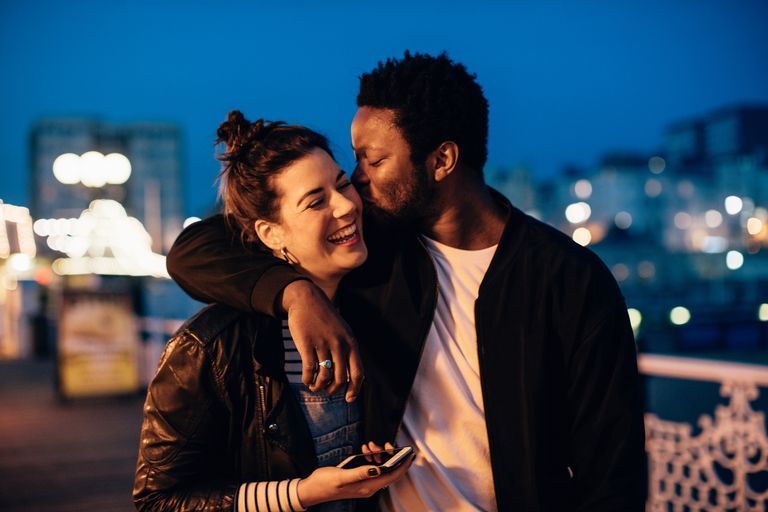Zoe, a 45-year-old woman in the U.K., has been with her wife for 22 years. Five years ago, they opened up their relationship, and Zoe also dated and slept with cis men, gender queer people, and trans people. Realising she was attracted to a number of genders, Zoe—who had previously identified as lesbian—came to identify as queer and pansexual, or attracted to people regardless of their gender. But she also identifies as polysexual, or attracted to multiple genders.
Pansexual and polysexual may sound similar, but there's a key difference. As Zoe explains, the word "pansexual" denotes that someone's gender is not a factor in her attraction to them, when in fact, sometimes, it is—which is where "polysexual" comes in handy.
“There are some aspects of my sexuality where the gender, gender identity, or gender presentation of the other person forms a specific part of my attraction to them,” Zoe says. “Equally, there are some sexual acts where the gender of the other person matters to my erotic imagination … ‘I want a big strong man to tie me up,’ for example. It could be that I’m attracted to their masculinity, their femininity, their own unique androgyny, or their fluidity.”
The word “polysexual” acknowledges that “sometimes, a certain romantic or sexual need might be tied specifically to one or more genders,” she explains.
What does polysexual mean?
Roger Kuhn, a psychotherapist, sex therapist, and sex educator, defines polysexuality as “sexual attraction or sexual desire for more than one gender or gender presentation.” Many polysexual people also identify with bisexuality, queerness, or another sexual orientation.
Some distinguish polysexuality from pansexuality not just because, as in Zoe’s case, the word “polysexual” might emphasize that another person’s gender itself is attractive, but also because a pansexual person is generally attracted to all genders, while a polysexual person is attracted to two or more, but not necessarily all, Kuhn explains.
For example, someone who is attracted to women and non-binary people, but not men, might identify as polysexual. They are not attracted to all genders, but they are attracted to more than one. Someone attracted to all genders, however, might identify as polysexual as well because they, too, are attracted to more than one gender. The opposite of polysexual is monosexual—only being attracted to one gender—which would include identities such as straight, gay, and lesbian.

Different people might have different definitions for polysexual.
“All of these sexualities have their own distinct meaning, but it is important to recognize that different people may define each of these terms in different ways,” says Justin Lehmiller, Ph.D., Kinsey Institute researcher, member of the Men's Health Advisory Panel, and Astroglide’s resident sex researcher. “Thus, it is important not to make assumptions about what a given identity label means for a given person.”
In addition, not all people who are attracted to more than one gender identify as polysexual, says sex therapist Shamyra Howard. “It doesn't matter how you identify; you can still be attracted to multiple genders, even if you don't consider yourself polysexual. Attraction is personal.” People may also be attracted to multiple genders and identify as polysexual, but only have experience with one gender, adds Kuhn. Their polysexual identity is still valid, though, because it describes how they feel.
Polysexuality as an identity may be growing increasingly popular as more people identify with genders other than “man” or “woman,” says Kuhn. “As trans, gender-nonconfirming, and non-binary people become more visible in the media, people become more open-minded and more willing to explore their curiosity and attractions.”
Right now, it’s unclear how common it is for people to identify as polysexual, mainly because people are only now becoming aware of the label, but Kuhn believes it’s already fairly popular.
“While researchers are working to identify how many people identify as polysexual, it's important to know that no two people are alike and you don't need another person's identity to validate your own,” says Howard.
How do you know if you're polysexual?
You might be polysexual if you have noticed that you’re attracted to people of different genders, that you dislike only dating or sleeping with people of one gender, or if you feel, as you learn about polysexuality, that you’ve found a label that fits who you are, Howard says.
“If you find that you are attracted to persons of more than one gender, but your attractions do not necessarily extend to all genders, you may be polysexual,” Lehmiller says. Sometimes, he adds, the word “polysexual” gets confused with “polyamorous”—having more than one romantic relationship at a time—but these two identities are unrelated.
People’s sexual desires can change throughout their lives, as with Zoe, so it’s common for people to come to identify as polysexual after previously identifying differently. “We may have had attractions to one gender and then start to be attracted to another gender as we age or enter a new life phase,” says Kuhn. “People of all genders and gender presentations can experience feelings, desires, and attractions for people of same or differing gender identities that may be momentary, long lasting, and/or fluctuate over time.”
Zoe is currently just as in love with her wife as she was before, and also enjoys being with another partner who is genderqueer and genderfluid. “Loving people of several genders has been really liberating and has allowed me to explore my own gender expression a little more,” she says.
Kuhn recommends that if you experience attraction to multiple genders, perhaps even people of a gender you haven’t been attracted to before, you simply “embrace it and enjoy the beautiful, sexy spectrum of humanity.”
